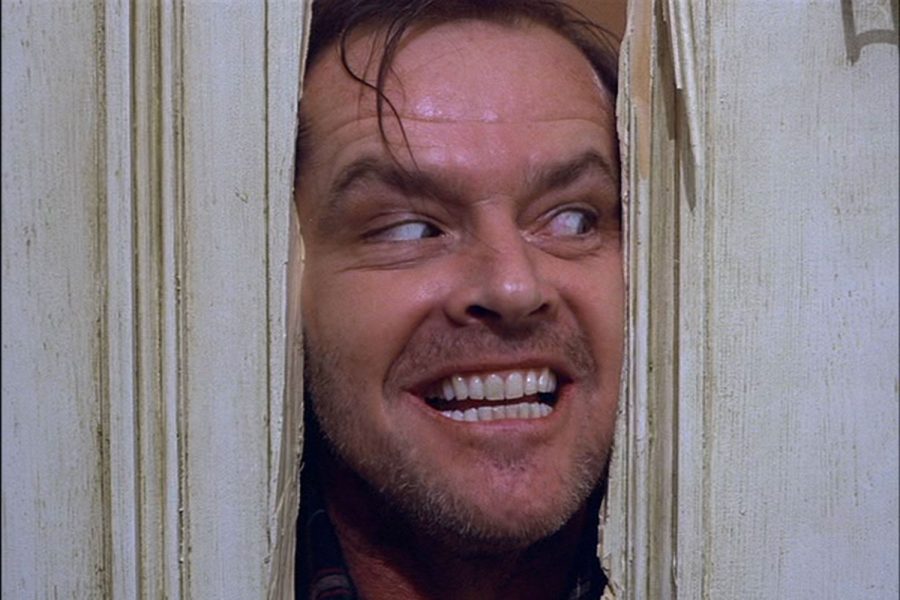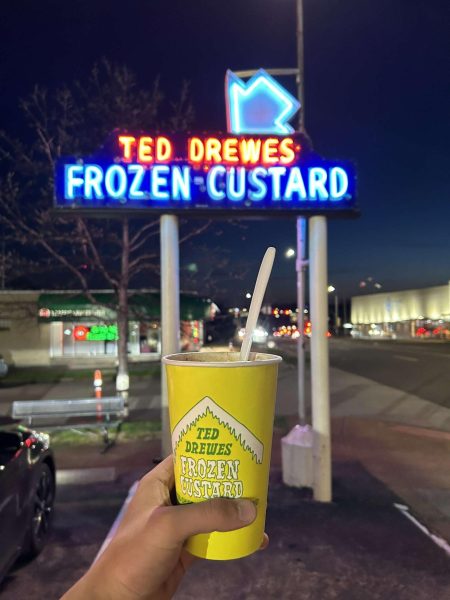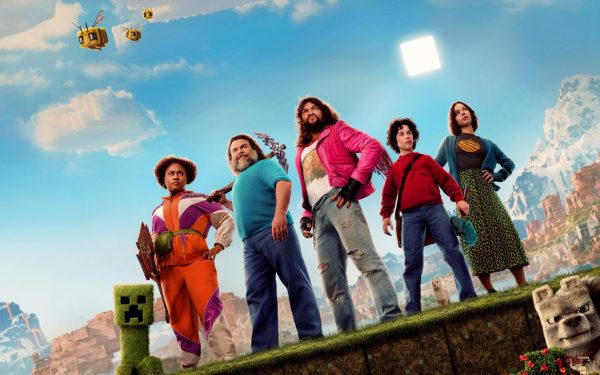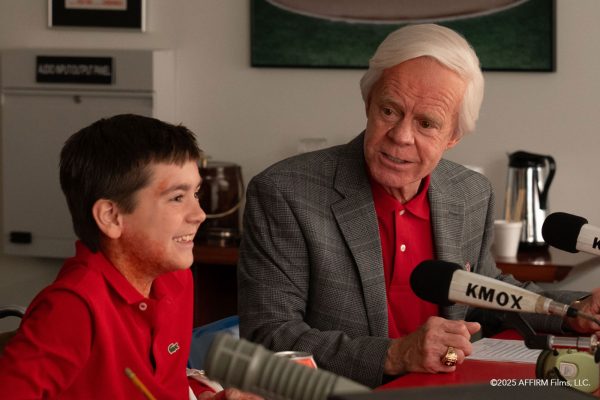Retro Review: The Shining
Jack Nicholson bursts through the door, trying to break in.
“The Shining” is one of the most eerie experiences cinema has to offer. Directed by Stanley Kubrick, “The Shining” has withstood the test of time due to its masterful presentation and impeccable performances. The superficial plot follows the story of Jack Torrance, portrayed by Jack Nicholson, a writer who agrees to take care of a hotel during its close in the winter. But upon delving further into the atmosphere, the film’s ominous tone and imagery suggests something far more sinister and grandiose than initially grasped on the first watch.
Even from the first shot in the film, the soundtrack of a disquieting electric organ instills a feel of dread in the audience as a bird’s eye view glides over a long, winding road up to the Overlook Hotel. The film’s exposition is conveyed simultaneously with the plot, the development not having to grind to a halt in order to establish characters and setting. Instead the writing and presentation allows the viewer to get acquainted with the exposition in an uncannily realistic way compared to other films of the genre. The film’s pacing is devilishly slow, but incredibly appropriate. “The Shining” tends to meander and take its time, allowing the audience to familiarize itself with the cryptic layout of the Overlook hotel.
The film’s music and cinematography also provide an essential aspect to something that makes “The Shining” more of an experience than a movie: atmosphere. The film’s cinematography can only be described as “exceptionally normal.” Kubrick implements very basic framing and camerawork, which seems unusual for him considering his illustrious previous works in film-making such as “2001: A Space Odyssey” and “A Clockwork Orange.” But the presentation suggests that this elementary cinematography is completely intentional, almost as if Kubrick feels that impressive shot composition and bombastic, symphonic scores provide a sense of immersion-breaking comfort while watching a horror film.
While most horror movies of its time such as “Friday the 13th” or “Nightmare on Elm Street” have protagonists face off against one tangible enemy or human, “The Shining” breaks the mold by chronicling the slow drive into insanity from an invisible evil. “The Shining” compensates for an intangible villain with a psychotically expressive performance from Jack Nicholson, who conveys so much emotion and thought in his face alone, telling viewers volumes in moments of silence and stillness without having to waste moments on mundane monologues or narration.
The film terrifies audiences over 30 years after its release due to the way it never reveals its true intentions, with devoted fans still concocting various wild theories about themes and imagery in the film to this day. Common theories include elements of reincarnation, Native American Genocide, even the moon landing, and the meticulous details in every scene and background lend themselves to support even the most outlandish of ideas. This perfectly outlines how “The Shining” uses a lack of understanding to expertly invoke fear in the viewer. This provokes an unsettling absence of closure, and the audience leaves the movie with more questions than entering.
When looking for a petrifying, yet cerebral movie, look no further. If you have yet to watch “The Shining” for your first time, it is a must-watch for any cinema or horror fan. But if you have already seen the film, a second viewing is necessary to absorb all the minute, articulate details Kubrick has littered into his 1980 opus.

Favorite food:
Banana milkshake
Hobbies:
theater, video games, movies
Favorite fast food place:
Steak 'n Shake
Never shower for the rest of your life or never brush your teeth?
Never...












